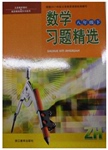题目内容
The United States Capitol Dome(圆顶) in Washington, DC, is recognized around the world as a symbol of the U.S. Government. Since last November, the dome has been surrounded by metal poles and heavy cloth as part of a repair project.
The last major repair work on the U.S. Capitol took place in 1960. Since then, the dome has become weathered and worn. The Architect of the Capitol group reports that the dome has more than 1,000 narrow breaks on its surface and other damage.
The dome was completed around 1863. U. S. Senate Historian Don Ritchie says the dome’s cast(石膏) iron frame is at special risk of weathering. “The capitol dome, being cast iron, has been hit by lightning countless times. And so the current construction is to repair the leaks, to fill the cracks, to take off extra layers of paint.”
Some recent visitors to the Capitol were unhappy about its current appearance. They had hoped to get a picture of the usually shining dome. Joyce said, “It was impressive, and very fantastic, and all white, but when I come here today, it is under construction so my family cannot see it clearly, it is kind of a disappointment.”
Others were more understanding of the repairs. Rick Jones, another visitor, said, “It’s a little inconvenient for us not to see the dome but you have to think about the future and the people will be coming to this place for centuries...and you know ,there just needs to be preventive maintenance(维护). I am not upset with that at all.”
The project is expected to take more than two years to complete. The dome should be ready for a new president in January 2017.
1.We can learn from the passage that the United States Capitol Dome is _______.
A. widely recognized as a symbol of the U.K. government.
B. surrounded by many repair projects
C. worn by being exposed to the weather
D. well maintained and in excellent condition
2. Which of the following is NOT included in the current construction?
A. To replace the cast iron frame.
B. To stop the leaks(渗漏).
C. To remove the old paint.
D. To fill up the narrow breaks.
3.What do we learn about the recent visitors to the Capitol ?
A. They could get a clear look at the dome.
B. They were all disappointed at the sight of the Capitol’s building.
C. They were impressed by the white dome’s fantastic beauty.
D. They held different views on the Capitol’s current appearance.
4.The text is most probably taken from ___________.
A. a book review B. a news report
C. a guide book D. a science report
 习题精选系列答案
习题精选系列答案
